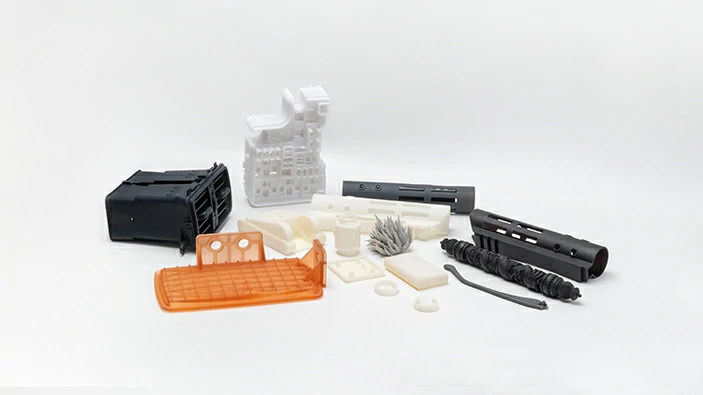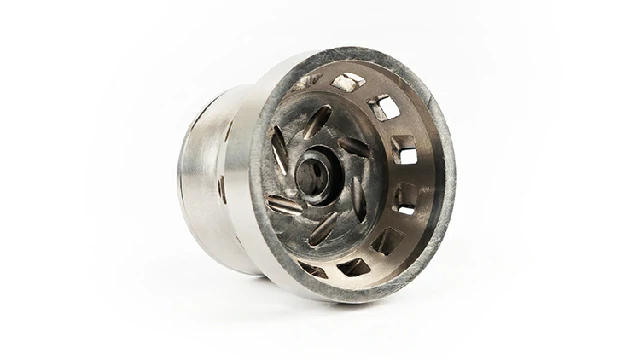
- info@prototypeshlh.com
- +86-133-9285-9203
- Room 2003, 20th Floor, Xingji Building, Shangde Road, Shajing Street, Bao'an District, Shenzhen
SERVICES


CNC Machining Service
Tight tolerances and finishing capabilities, as fast as 2 days.

Vacuum Casting Service
Production quality parts without the tooling investment.

Sheet Metal Fabrication
Experience the versatility 6 cost efficiency withflexible application options.

Die Casting Service
Create high quality custom mechanicals withprecision and accuracy.

Injection Molding Service
Production-grade steel tooling, as fast as weeks.
Popular Services

Injection Molding Service
A faster, easier way to order high-quality injection molded parts that accelerates iteration, testing, and scaled production. Upload your designs for DFM feedback and pricing in 24 hours.

3D Printing Service
Our 3D printing solutions cater to personalised needs with a diverse range of materials and colour options, including SLA, SLS, FDM, Projet, DMLS, and MJF printing services.

Surface Finishing
The easiest way to source your custom parts, with 15+ surface finishing options.

Design Guide
In-depth design guides full of best practices for all of HLH's manufacturing processes.

Case Studies
Success stories from innovativecompanies using HLH.

Blog
lndustry trends, company news andproduct updates.
Featured Posts

Aerospace & UAV
HLH is your 3D manufacturing partner from prototype to large scale production.

Consumer Products
New Product Introduction Solutions for Consumer Products.

Automotive
New Product Introduction Solutions for Automotive.

Industrial Machinery
The main purpose of industrial prototyping is to take the product from drawings into the real world.

Robotics & Automation
Need some assistance bringing your robotic device or parts from the sketch-board to reality?

Communications
We understand the demands and ever changing landscape of the communications industry.

Product Development
Industrial design and engineering consultancies are some of the most innovate and creative enterprises on the planet.


When it comes to prototyping, choosing the right manufacturing method depends on the specific needs of your project, including factors like complexity, speed, cost, material properties, and finish quality.
Both 3D printing and CNC Machining are powerful techniques, but each has distinct advantages and limitations. Here's a breakdown of how they compare in the context of prototyping:
3D printing is an additive manufacturing process where material is added layer by layer to create a part. The most common types of 3D printing include FDM (Fused Deposition Modeling), SLA (Stereolithography), and SLS (Selective Laser Sintering). This process allows for the rapid creation of complex geometries and is typically more cost-effective for low-volume production.

(HLH 3D Printing)
CNC machining is a subtractive manufacturing process, where material is removed from a solid block to shape a part using various tools such as lathes, mills, and drills. CNC machining produces parts with high precision and surface finish quality, making it ideal for parts that require fine tolerances and a high level of detail.

(cnc Machining)
3D Printing:
Strength: 3D printing excels at producing complex geometries and intricate designs that would be difficult or impossible to achieve with traditional methods. Features like internal channels, hollow structures, and organic shapes are easily printed.
Flexibility: It's great for rapid design iteration, allowing changes to be made quickly without the need for retooling or creating new molds.
CNC Machining:
Strength: CNC machining is better suited for simple to moderately complex designs that involve precise, standard shapes (e.g., cubes, cylinders, etc.). While complex geometries can be achieved, they may require more effort and specialized tools.
Limitations: High complexity may increase the cost and time of manufacturing, and some intricate internal features may not be feasible without additional processes.
3D Printing:
Advantage: Faster turnaround is one of the standout benefits of 3D printing. Since the process is additive (building up material layer by layer), there's no need for tooling or molds. Complex parts can be printed in a matter of hours, depending on the size and resolution.
Rapid Prototyping: 3D printing is particularly valuable for rapid prototyping and producing multiple iterations quickly without significant downtime between changes.
CNC Machining:
lower Setup: CNC machining typically involves more preparation time, especially if a custom tool needs to be created. While the actual cutting of material may be fast, the overall setup time can be longer than 3D printing.
Efficiency in Production: For larger runs of similar parts, CNC machining can be faster overall, but for a single prototype, 3D printing is usually quicker.
3D Printing:
Variety of Materials: 3D printing uses plastics, metals, ceramics, and composite materials, but material properties are often more limited in comparison to CNC machining. It's possible to achieve reasonable mechanical properties for non-structural prototypes.
Limitations: Some 3D printing materials (especially FDM) can lack the strength, durability, or finish quality of CNC-machined parts, especially for parts that will undergo functional testing.
CNC Machining:
Broader Material Range: CNC machining can work with a wide range of materials, including metals (like aluminum, steel, titanium), plastics, composites, and even wood. The material properties in CNC machining are typically superior in terms of strength, finish, and precision.
End-Use Prototypes: If you're making a prototype that needs to simulate the final product's material and mechanical properties (e.g., an aluminum part for a consumer product), CNC machining is often the better choice.
3D Printing:
Precision: While 3D printing has made great strides in accuracy, it generally can't match the tight tolerances achievable with CNC machining. This may result in parts that require post-processing for smooth finishes or specific dimensional tolerances.
Surface Finish: Depending on the printing method, the surface finish may be rougher, and often needs additional sanding, painting, or polishing to meet specific aesthetic or functional standards.
CNC Machining:
High Precision: CNC machining provides extremely tight tolerances (often within ±0.1mm or better), making it ideal for parts requiring high precision, such as gears, functional parts, or those with critical dimensions.Superior Finish: CNC parts typically come with a smooth surface finish that often doesn't require additional processing unless high polish is needed.
3D Printing:
Lower Initial Cost: 3D printing usually has lower setup costs compared to CNC machining, making it ideal for low-volume and one-off prototypes. You don’t need to create molds or tooling, and the cost mainly depends on material and print time.
Cost for Iterations: If you're testing several iterations or need quick design changes, 3D printing is more cost-effective than CNC machining.
CNC Machining:
Higher Initial Setup: CNC machining often involves a higher setup cost, especially if a custom tool is needed. However, once the setup is complete, it can be more cost-efficient for large volumes.
Cost for Single Prototypes: For a single or low-volume prototype, CNC machining is usually more expensive than 3D printing, due to tooling costs and setup time.
3D Printing:
Strength: The strength of 3D printed parts is generally lower than CNC machined parts, especially in plastic-based prints. Parts made from materials like PLA, ABS, or resin may not be suitable for functional or load-bearing prototypes.
Applications: 3D printed prototypes are ideal for visual models, concept testing, or fit checks, but might not be appropriate for high-stress applications.
CNC Machining:
Superior Strength: Parts made from metals or hard plastics via CNC machining are generally much stronger and more durable than most 3D printed parts.Real-World Testing: If you need a prototype that can undergo functional testing or be used as part of a mechanical assembly, CNC machining is usually the better option.
3D Printing:
Minimal Post-Processing: Some 3D printed parts need little or no post-processing, but others may require sanding, painting, or support removal, depending on the printing method.Surface Finish Issues: While the FDM (Fused Deposition Modeling) process tends to leave visible layer lines, SLA (Stereolithography) and SLS (Selective Laser Sintering) provide smoother finishes but may still require post-processing for precision or cosmetic purposes.
CNC Machining:
Minimal Post-Processing: CNC machining often produces parts with a finished surface that requires little to no additional work unless a specific polish or texture is needed.Fine Detail: Fine details and dimensions can be controlled directly during the machining process, resulting in a high-quality final product.
So, which option is better for choosing the right manufacturing technology?
Both 3D printing and CNC Machining offer unique advantages for prototyping. If you're working on complex, low-volume prototypes and need rapid iteration, 3D printing is likely the better choice.
On the other hand, if precision, material strength, and end-use performance are key factors, CNC machining may be more suitable. In many cases, a combination of both methods can also be used to maximize the benefits of each.